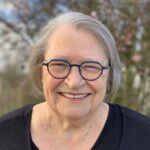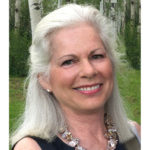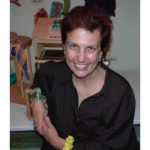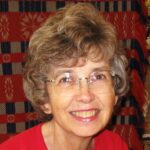
Gay McGeary is a scholar-weaver based in Central Pennsylvania. She has been weaving, collecting, and researching early coverlet and counterpane patterns and weave structures for over thirty years. While her weaving is inspired by her research, her research is enhanced by her weaving explorations of the early craftsmen.
She shares her research as a regular contributor to various weaving periodicals, including the Complex Weavers Journal. She is the chair of the Complex Weavers Early American Coverlets and Counterpanes Study Group. One of her star work coverlets is featured in the Complex Weavers book entitled Eight Shafts: Beyond the Beginning. She enjoys giving workshops and lectures to interested groups. Recently she wove a series of three coverlet wall hangings inspired by a 19th century Pennsylvania German star work draft and matching coverlet. Each has appeared in a juried exhibit: (1) Complexity 2022, (2) Interpreting Change: Weaver’s Guild of Boston 1922-2022, and (3) Art of the State (Pennsylvania) 2022.
Back to Seminar Leaders
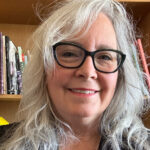
Lynn Fitzpatrick teaches studies in the departments of Architecture and Interior Architecture + Design in the Fay Jones School of Architecture and Design at the University of Arkansas. Her interest in lightweight architecture, particularly structural surfaces and long span building enclosures, influences her creative work in weaving. She investigates methods of inducing tension into textiles through material choice and weave structure. Recent work with students expands upon how high-tech fibers and textiles can be tensioned using structural elements found in architecture such as columns, tension cables, and structural frames. Lynn holds a Bachelor of Science in Design and Environmental Analysis from Cornell University and a Master of Architecture from Rice University.
Back to Seminar Leaders
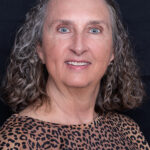
When Ivy DeHart and her husband moved to Loveland, CO in 1975, she was a new mother and bored. Her husband encouraged her to take an adult education class at Colorado State University and offered to babysit while she attended the evening class. She chose “Learning to Weave,” taught by Linda Ligon of Handwoven fame and that was how it all began.
She was a member of the Northern Colorado Weavers Guild for 10 years. After a move to Boise, ID, she joined the Handweavers Guild of Boise Valley and for 30 years found it to be a place of encouragement with excellent weavers. She helped lead a Delightful Dyers study group for the guild with Mary Berent and Resa Jones for three years from 2004-2007. She joined Complex Weavers after purchasing her 32-shaft Megado loom in 2002.
She is a member of the CW “Twenty Four, More of Less” study group. She entered her first Complexity show in 2014 and won the Complex Weavers Award for “Interlaced Ribbons.” She has been entering Complexity ever since because it challenges her to keep weaving and learning.
Back to Seminar Topics
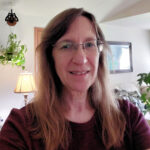
Vila Cox started her journey in fiber arts at an early age, embroidering pillowcases before she learned to read. After exploring many types of fiber art, she took a weaving class in 1997. She joined the Handweavers Guild of Boise Valley in 1998 and first joined Complex Weavers in 2000.
Vila completed the HGA Certification of Excellence in Weaving in 2008 with a Level II topic of “Multi-Harness Diversified Plain Weave.” She has been involved with several examinations and was one of the examiners in 2022.
She is a production weaver concentrating on weaving baby blankets, towels, napkins, and scarves to sell at local markets in Boise, Idaho, and online. She teaches beginning weaving lessons.
Back to Seminar Leaders
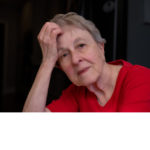
Alice Schlein has been weaving and teaching for 55+ years. Although a self-taught weaver she has augmented her education with workshops and seminars; she has woven on dobby and jacquard looms, rigid heddle looms, and tapestry looms. Alice is a former contributing editor to Weaver’s magazine; author of Network Drafting: an Introduction, The Liftplan Connection, Lampas for Shaft Looms, Amalgamation, and co-author, with Bhakti Ziek, of The Woven Pixel. She currently weaves in her Greenville, South Carolina studio and blogs at https://weaverly.typepad.com.
Back to Seminar Leaders





